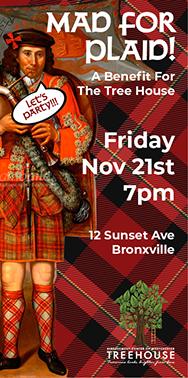From the Mayor: Update on Village Efforts on Climate Mitigation

By Mary Marvin, Mayor of Bronxville
July 6, 2022: In February of 2021, the Trustees and I passed a resolution to join New York State’s Climate Smart Communities.
As part of our duties, we formed a Village Climate Smart Task Force under the auspices of the Village Green Committee to document local climate impacts, possible mitigation steps and plans for future sustainability.
In April of this year, Carole Upshur of the Climate Smart Committee (CSC) completed a very comprehensive report on greenhouse gas emissions from municipal operations. The Village Trustees and staff are already finding avenues to decrease emissions and save energy though the Village municipal output represents only 1.6% of the Village’s total Green House Gas (GHG) emissions.
Thanks to the incredible detailed and professional work of Ms. Upshur and Green Committee members, an additional report was presented to the Trustees at the June Board of Trustees meeting identifying sources of GHG emissions from all sectors of the Village: municipal, residential and commercial combined using a baseline year of 2018.
This report will be periodically updated to measure the Village’s progress and serve as a baseline and template in GHG mitigation strategies.
Over the last decade, Village government has taken steps to become more energy efficient by installing a geothermal heating and cooling system in Village Hall, transitioning street and traffic signal lights to LED bulbs, promoting recycling of materials, lawn debris and organic yard care, enacting new and more expansive solar energy code provisions and inaugurating a residential food scrap program. We have also installed three public electric vehicle charging stations and passed a new ordinance limiting the times of year when gasoline powered leaf blowers can be used in the Village. These efforts have all taken place without a measurable metric.
The same is true of the strides made in residential energy conservation of late including increased efficiencies in automobile purchases and home appliances, and the use of new green energy options.
We clearly need to do more as data collected in this report from a myriad of federal, state and county agency reports forecast climate effects for Bronxville which include dangerous warming. As example, in Westchester County, specific data demonstrates that in the last 50 years, Westchester had an average climate increase of 2°F and it is projected that days above 90°F could increase to over 30 yearly in our area by 2030, making summer temperature increasingly unhealthy.
Precipitation is also projected to increase in both winter and spring. In the next decade, Westchester County is one of three counties in the state to have significantly more rainfall events that produce more than 3 inches of precipitation with an increase in tropical storms and nor’easters highly probable. Westchester County specific data in the County Hazard Mitigation Plan actually identifies Bronxville as in their high-risk category for flooding from severe rainstorms with a medium risk of severe winter storms. As evidence, from 2001 to 2021, a record 48 storm events were recorded in the County
As to specifics in the new Village reports, not surprisingly, the largest category of energy consumption in the Village is residential use.
Road transportation and transit was the next largest proportion of greenhouse gas emissions with 22,956,000 annual miles traveled by cars, trucks and motorcycles on Village roads with 79.2% of the traffic gasoline powered, passenger vehicles and trucks. Metro North traveled 57,085 miles within the Village during the same period while the Bee Line bus traveled 20,850 miles within Village boundaries.
A very encouraging statistic is our rate of recycling at an impressive 64% (For many years running, Bronxville has vied with Bedford and Scarsdale for best percentage).
Diligence in recycling is a significant GHG mitigation, as our non-recycled waste has to be transported to a trash site in Peekskill, a facility requiring round trip hauling of 160 miles.
On another positive note, over 750 tons of yard waste generated in the Village is composted and our newly inaugurated food scrap recycling program has already collected 1.8 tons of food scraps a month.
To summarize, our community wide greenhouse gas emissions by sector: the largest contributor was residential energy with 40.6% of emissions, followed closely by commercial energy at 34.5%. Transportation and other mobile sources represent 18.6%, water and wastewater treatment 1.6% and fugitive emissions from natural gas distribution i.e., leakage 1.3%.
Putting our numbers in context, our residential and commercial GHG emissions for energy used was significantly higher than those of the Village of Hastings which has a population of 7800. This could be due, not just from actual energy use, but the size, condition and age of our housing units as well as our more extensive commercial base.
We now must use the inventory results to focus and prioritize actions to reduce emissions, specifically in the area of residential and commercial energy use.
Using this data driven report, we can now more easily set targets and quantify outcomes with the goal to become an important participant and local leader in climate mitigation in Westchester County.
Photo by N. Bower
Editor's note: As a public service, MyhometownBronxville publishes press releases, statements, and articles from local institutions, officeholders, candidates, and individuals. MyhometownBronxville does not fact-check statements therein, and any opinions expressed therein do not necessarily reflect the thinking of its staff.
Government & History Directory
Bronxville is a quaint village (one square mile) located just 16 miles north of midtown Manhattan (roughly 30 minutes on the train) and has a population of approximately 6,500. It is known as a premier community with an excellent public school (K-12) and easy access to Manhattan. Bronxville offers many amenities including an attractive business district, a hospital (Lawrence Hospital), public paddle and tennis courts, fine dining at local restaurants, two private country clubs and a community library.
While the earliest settlers of Bronxville date back to the first half of the 18th century, the history of the modern suburb of Bronxville began in 1890 when William Van Duzer Lawrence purchased a farm and commissioned the architect, William A. Bates, to design a planned community of houses for well-known artists and professionals that became a thriving art colony. This community, now called Lawrence Park, is listed on the National register of Historic Places and many of the homes still have artists’ studios. A neighborhood association within Lawrence Park called “The Hilltop Association” keeps this heritage alive with art shows and other events for neighbors.
Bronxville offers many charming neighborhoods as well as a variety of living options for residents including single family homes, town houses, cooperatives and condominiums. One of the chief benefits of living in “the village” is that your children can attend the Bronxville School.
The Bronxville postal zone (10708, known as “Bronxville PO”) includes the village of Bronxville as well as the Chester Heights section of Eastchester, parts of Tuckahoe and the Lawrence Park West, Cedar Knolls, Armour Villa and Longvale sections of Yonkers. Many of these areas have their own distinct character. For instance, the Armour Villa section has many historic homes and even has its own newsletter called “The Villa Voice” which reports on neighborhood news.
Link to Village of Bronxville One Square Mile Monthly Newsletter
Village of Bronxville Administrative Offices
337-6500
Open 9:00am - 4pm excluding holidays and weekends
Bronxville Police Department
337-0500
Open 24 hours
Bronxville Parking Violations
337-2024
Open 9:00am - 4pm excluding holidays and weekends
Bronxville Fire Deparment
793-6400



















